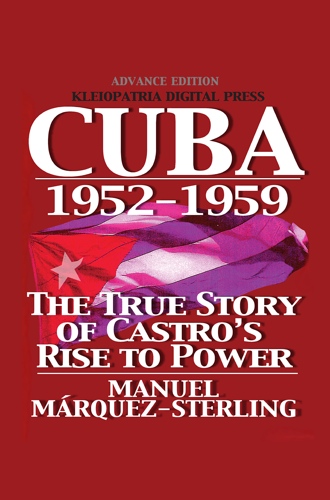May 24, 1958
On May 24, 1958, Batista initiated the first and only major military offensive against Castro’s rebels in the Sierras: Operación Verano [Operation Summer], dubbed La Ofensiva [The Offensive] by the rebels. The operation was intended to find and eliminate Castro forces. The military force applied was considerable, though much smaller than is commonly reported: six battalions with air and naval support by the commands of Generals Eulogio Cantillo and Alberto del Rio Chaviano. Six battalions accounted for about a quarter of Batista’s total troops. Batista wanted the bulk of troops to remain assigned to protecting sugar mills and fields growing sugar and coffee from increasing rebel attacks.
Operation Verano primarily engaged four battalions, those led by Col. Ángel Sánchez Mosquera (11th Bat), Maj. Eugenio Menéndez Martínez (22nd Bat), Maj. Suárez Zoulet (19th Bat), and Maj. Jose Quevedo Pérez (18th Bat).
Operation Verano was ill-managed by an army whose ranks were increasingly demoralized, disaffected and plagued by internal conflict. Despite achieving initial success, the operation ended three months later in complete failure. Its engagements resulted in significant defeats, surrenders, losses and desertions for Batista forces. Notable battles included Merino, El Jigüe (La Plata), Santo Domingo, Las Vegas de Jibacoa, and the final battle of the campaign, Las Mercedes.
The rebel forces’ defense to this offensive provided a real military victory for Castro, and an even greater propaganda victory. In addition to increasing terrorist and guerrilla raid operations, Castro’s defense had three major elements: (a) military engagements in the Sierra; (b) new kidnapping and terror operations to bring pressure on the US; and (c) pressure through the US press and State Department, denouncing the Batista offensive for using US-supplied weapons (delivered before the arms embargo) and demanding that the US take action against Batista.
Some insight into these Castro campaigns and their context is found in contemporaneous US press reports in Time and a Homer Bigart story in the New York Times, and in a then confidential letter from US Consul Park Wollam to the US Department of State Officer in Charge of Cuban Affairs (Terrence Leonhardy). Bigart and Wollam were Castro sympathizers whose accounts consistently reveal a marked pro-Castro bias.
A US State Department memorandum written about a week after the start of Operation Verano gives a glimpse of how successful Castro's propaganda initiatives were in engaging State Department, press, and congressional Castro sympathizers to apply pressure to constrain Batista from effectively using military assets. The State Department's Bureau of Inter-American Affairs ("ARA") took the position that Batista was violating MAP (Military Assistance Program) rules in deploying any US-supplied arms or US-trained troops because these were only to be used in fighting Communism—and they argued Castro’s forces were not communist. US military chiefs notably Admiral Burke saw the folly of the State Department’s arguments, and so indicated at a Department of State-Joint Chiefs of Staff Meeting.
Rebel tactics during Operation Verano included effective use of homemade bombs and landmines (what would today be called IEDs, Improvised Explosive Devices) to inflict casualties on Batista's forces. This was a new application of rebel experience in explosives previously concentrated on urban terrorism and industrial sabotage.
The element of Castro's three-pronged strategy that drew the most attention during Operation Verano turned out to be the least successful tactically: kidnapping US hostages to force US concessions. But even this achieved substantial gains in advancing Castro's propaganda objectives.
based on Manuel Márquez-Sterling's Cuba 1952-1959 and
Cuba 1952-1959 Interactive Timeline
Cuba 1952-1959 Interactive Timeline


 Mobile subscription
Mobile subscription



2 comments:
twould be really helpful if you told me what pages you got your information from, for paragraphs 4 and 6
ta!
The information in paragraph 4 is a summary drawing on material throughout Chapter 8 of the book, Batista’s Fateful Election Decision, pp. 133-177, especially pp. 146-156.
The information in paragraph 6 is from State Department documents now publicly available. The post includes links to the memoranda referred to; clicking on these will open a window with the full text of each memorandum to which this paragraph refers, which is readily accessible on web.
Post a Comment